From sconces made out of glass waste to the sensual interior for plant-forward bar Fura, Studio Gin&G derives delight from the tactual and tangible.
Fascinated with “the study of the physical Earth, along with its anthropologic human component,” Georgina Foo initially wanted to pursue a higher education in geography. However, she ended up studying architecture instead. “Amusingly, these are both integral elements that are intertwined in architecture and design too,” she reflects.
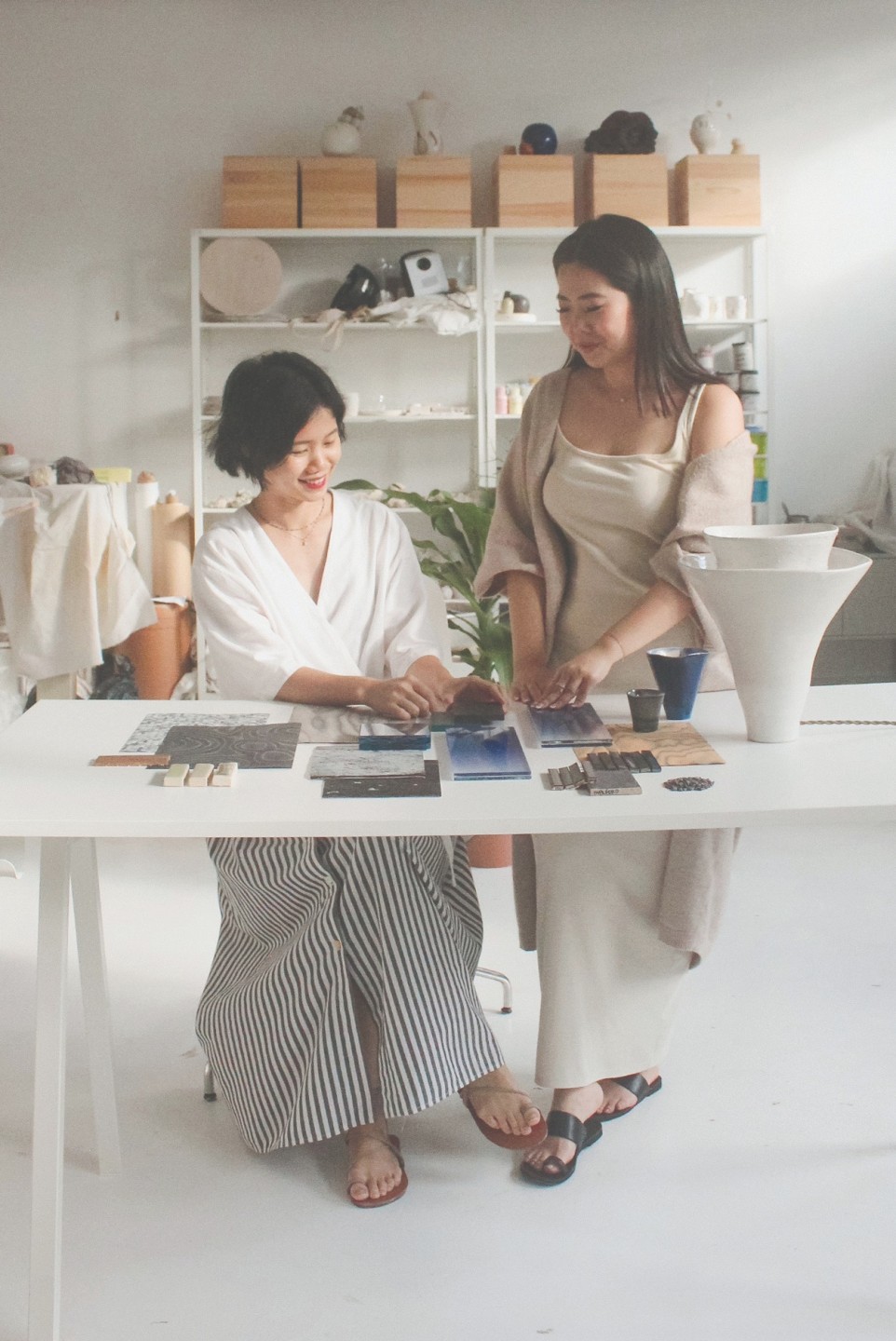
(From left) Genevieve Ang and Georgina Foo in their studio.
In junior college, she met Genevieve Ang. Both went on to study architecture at the National University of Singapore. After several years honing their creative skills in separate avenues, they came together last year to form Studio Gin&G.
In this short span of time, the studio has pushed the boundaries of creativity with a series of projects, borne from deep thought and a genuine love for the tactile. Like chefs and their ingredients or researchers, Ang and Foo are constantly testing out new ways that materials can be combined or re-imagined.
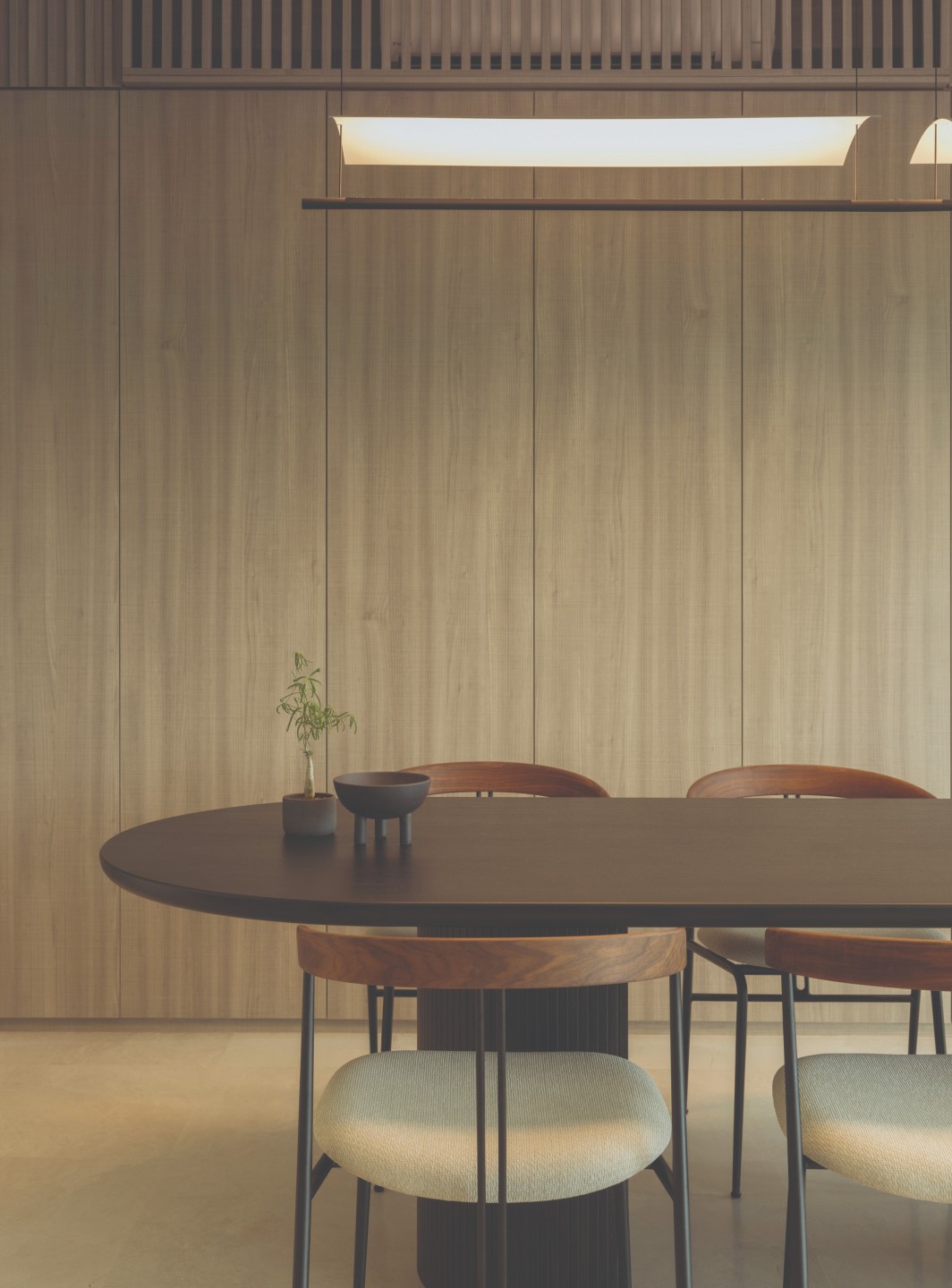
In Kovan Residences, honed beige marble floors, travertino plaster wall finish and timber veneers in the joinery creates a calm setting.
“In designing spaces, we do not approach materials as an afterthought or view them as a finishing touch, but as components entirely integral to the essence and the conceptualization of our designs. We believe that there is an innate poetry to materials that brings beauty and meaning to the spaces we design, dwell, and inhabit,” says Foo.
She adds, “The way a material is treated, processed, and applied speaks volumes of a craft. We are always opportunistic to learn more about new materials and to experiment new ways of applying conventional materials that will breathe a fresh perspective into the way we design.”
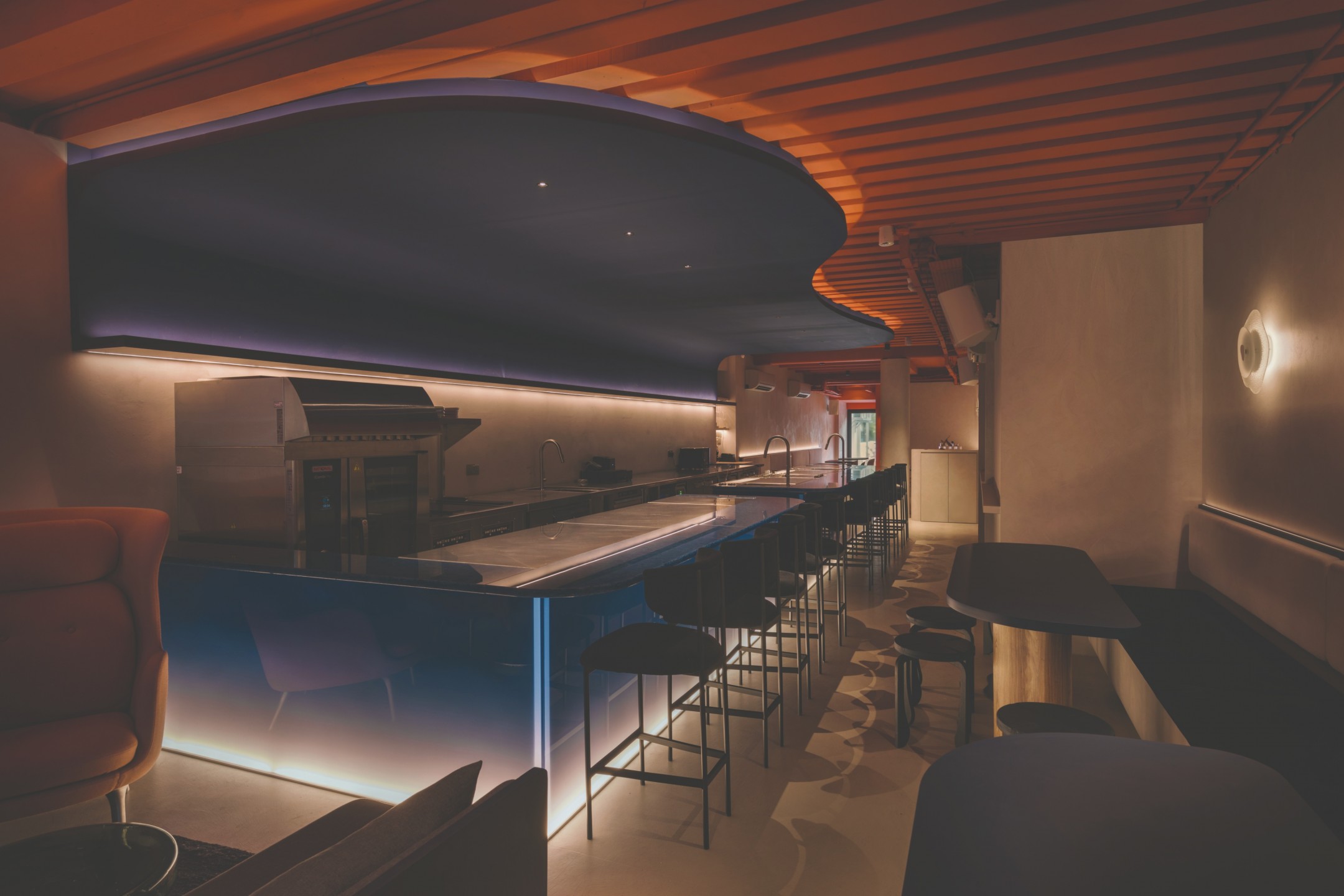
Fura’s design is clean and efficient in the use of materials to resonate with the ethos of being hyperconscious, while the use of colours engage diners with fun and lightheartedness
For example, in the retail store of jewellery brand Curious Creatures, the studio cast gemstones into the floor screed, telling a tale of how raw stones become gems. In newly opened plant-forward cocktail bar Fura, the bar’s countertop is made of Bio-Glass, which is made from 100 per cent recycled glass. “It is our musing on whether conventional surfacing materials can be derived from more eco-friendly sources, echoing the establishment’s endeavor to explore alternatives and sustainable food sources,” explains Foo.
Fura was opened by chef Christina Rasmussen and bartender Sasha Wijidessa in August. The former was previously the head forager at the three- Michelin-starred Copenhagen restaurant Noma while the latter had worked with Danish distillery Empirical co-founded by the former head of R&D at Noma. Housed in a second storey shophouse space in Amoy Street, its sustainable focus comes through from using ingredients that are abundant or in excess, or that reduce the carbon footprint. There is coffee made from burdock root and hemp seed, jellyfish martini, and insect protein as garnishing or as a base for sauce.
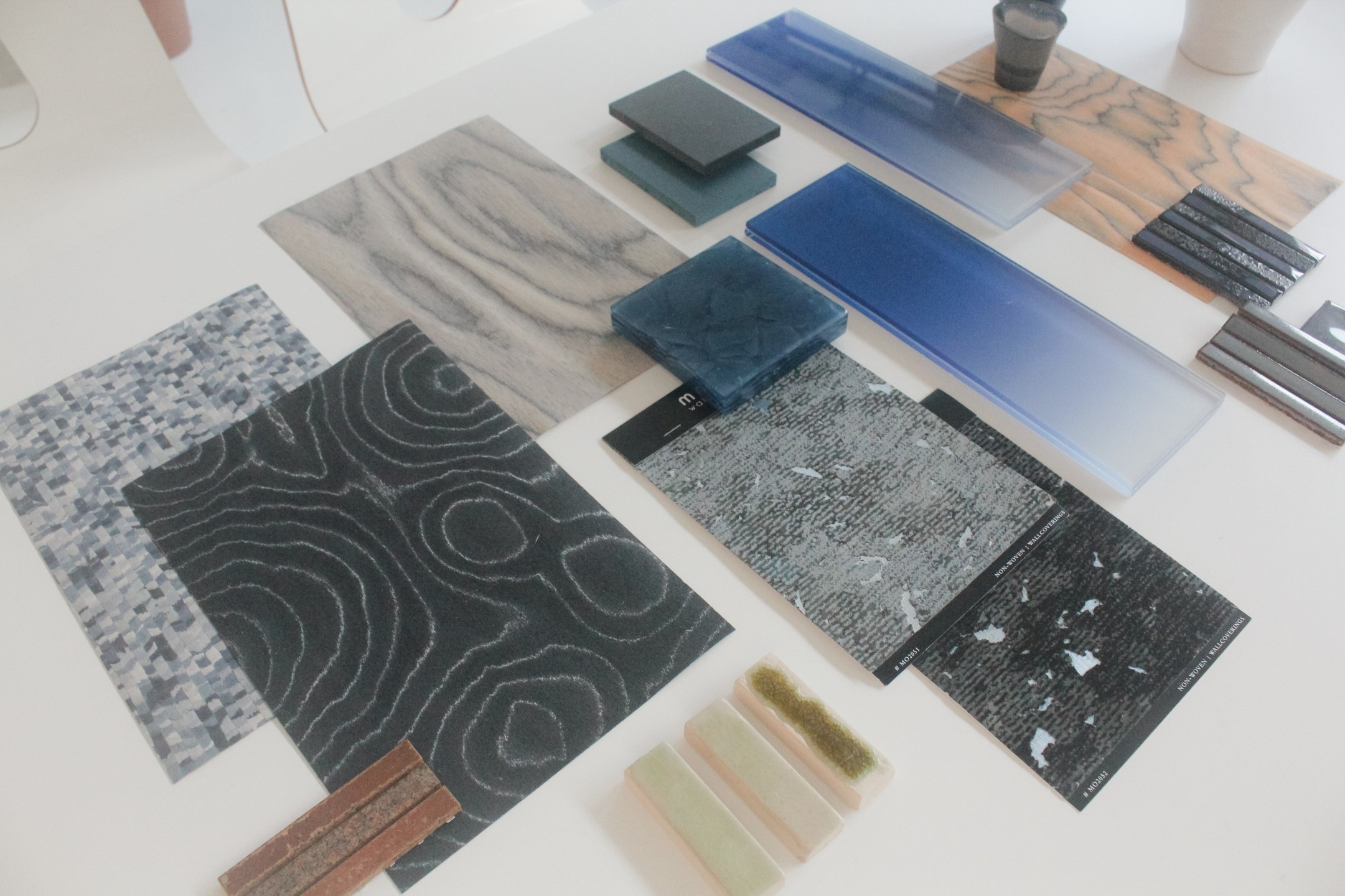
The cobalt and coral tones in the space present a cool and contemporary image that eschews the usual hippie-style décor of dining venues with eco agendas. Ang and Foo drew inspiration from the meaning of Fura (‘pine’ in Swedish). “Pine trees are known to form symbiotic relationships with other living organisms, which build a localised network that supports the larger ecosystem. Inspired by this, we reached out to local suppliers for offcuts, regional eco-materials, and collaborations to emulate the way of the pine tree,” says Ang.
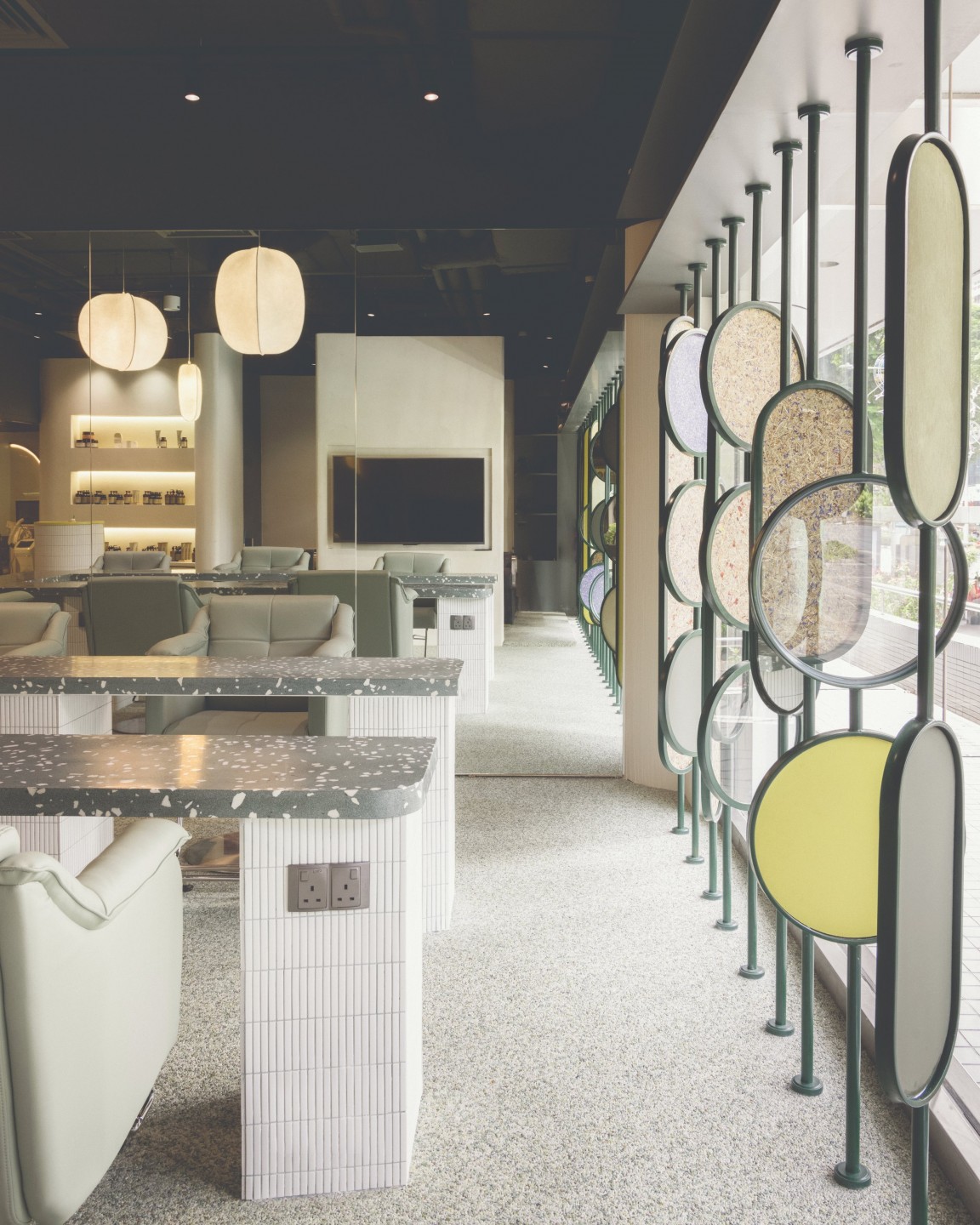
Bubbles Blow Bar in Palais Renaissance features bespoke rotatable screens of mirrors, glass and sustainably pressed organic wood substrates
A result of this is custom-designed wall sconces made of sheet glass offcuts. The studio built upon this experiment with a new collection titled Chance that was recently showcased at Emerge @ FIND — an exhibition at the FIND Design Fair Asia highlighting progressive Asian designers. The pieces have organic forms and a three- dimensionality that comes from layering several pieces of glass.
Beyond creating beautiful spaces, the studio wants to be a test bed for design ideas. Says Ang, “Through prototyping of new ways to design objects or rethinking how conventional materials that are deemed as waste can be given new life and creating a platform for cross collaborations between other designers, artists, makers and suppliers; we hope to start a design dialogue that would engage the industry meaningfully.”

Staygold Flamingo is a cafe in the day and bar at night, designed to meld the worlds of hip-hop and rock-and-roll.
This explains the studio’s cross-disciplinary oeuvre, ranging from product design to the creation of F&B and residential spaces. “The interweaving of different disciplines such as product, craft, and spatial design helps us explore design through different scales and lenses. It deepens our understanding and appreciation of how things are made,” Ang comments.
The founders’ influences reflect their unbridled approach to design. Foo admires former Celine creative director Phoebe Philo’s experimental take on silhouettes and materials, furniture from Liaigre for their refined details that “translates into users’ well living”, and controversial artist Marina Abramovic.
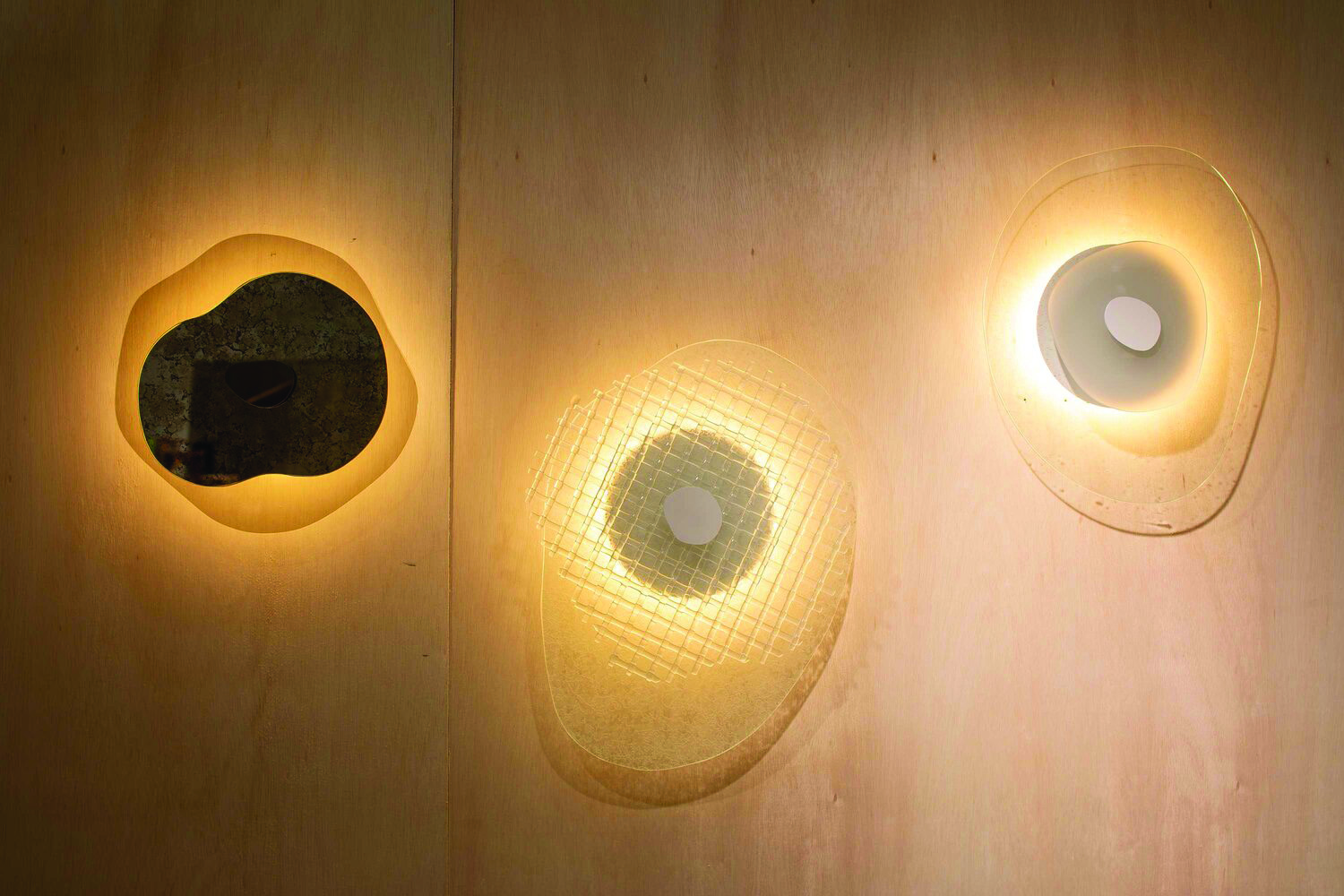
Some finishes in the Chance collection include antiquated mirror and bronze tinted mirror, as well as colour-tinted, acid-etched, fluted and frosted glass, among others.
“I am inspired by how her art continually questions and explores the human condition and blurs the boundaries between audience and performance. I appreciate the discourse behind her installations, where her mind and body is her art. Her dedication to hear craft is moving; she once said of her art ‘I was prepared to die’,” Foo remarks.
Ang credits her thesis tutor Junko Tamura for grounding her design thinking in extensive research on history, patterns and systems. Like Foo, art is also a creative source. Pioneers like Ruth Osawa and Isamu Noguchi gave her “a new perspective in viewing space as a canvas for their artworks, pushing my limited understanding of space beyond the lens of architecture.”



